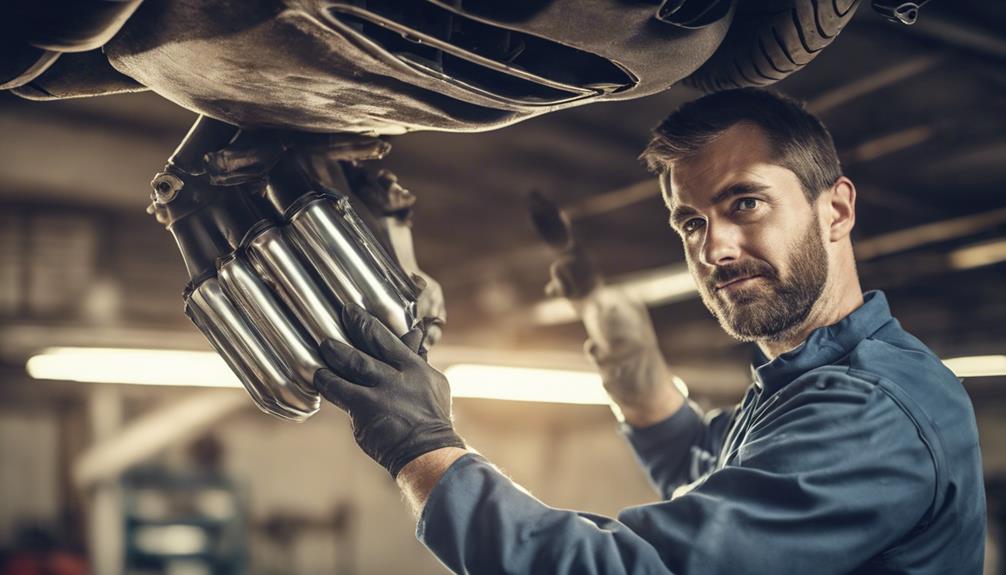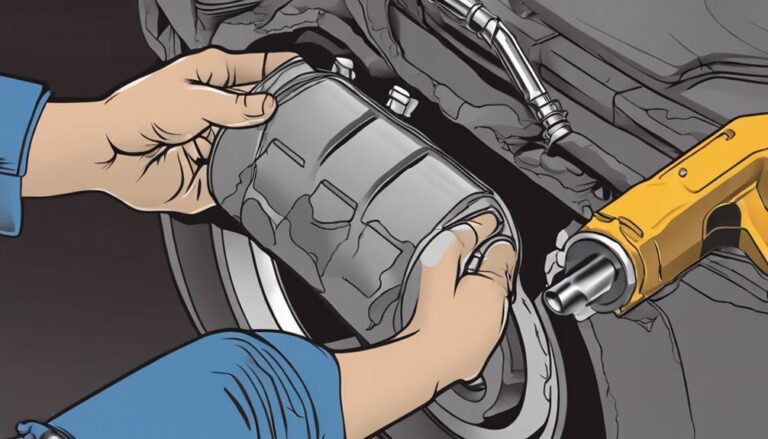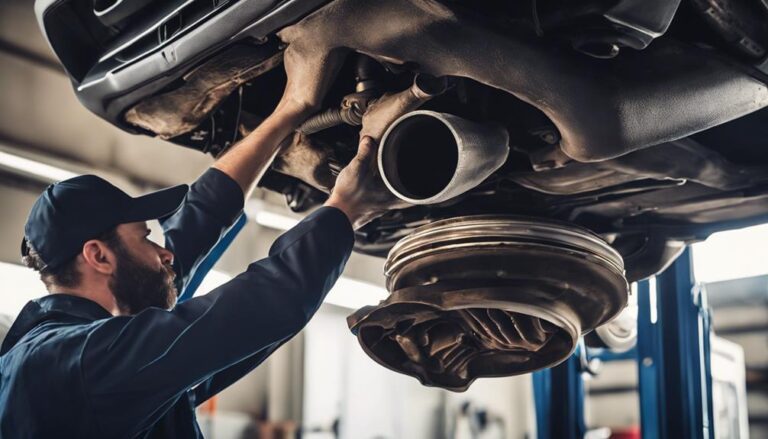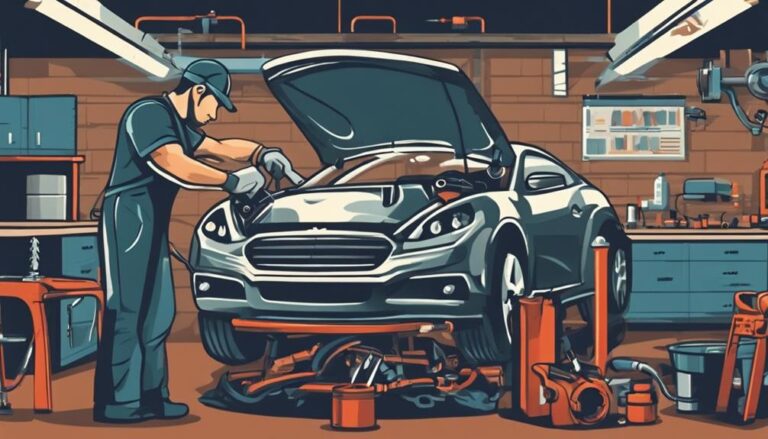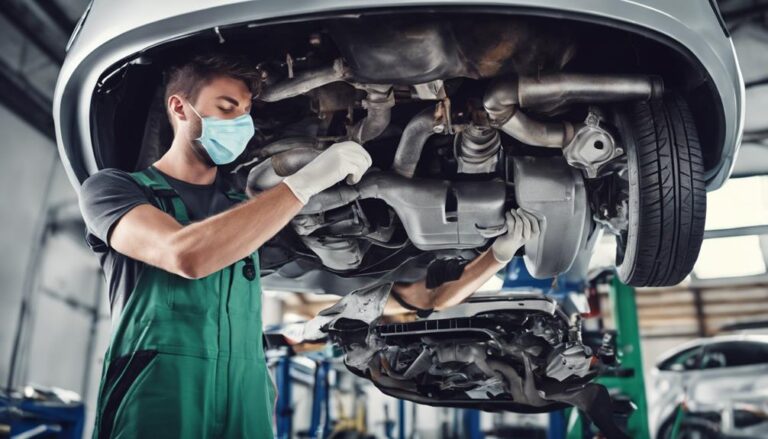Top Tips for Hybrid Car Catalytic Converter Replacement
When it comes to replacing the catalytic converter in your hybrid car, think of it as a heart transplant for your vehicle. The efficiency and performance of your hybrid depend on the proper functioning of this essential component.
But how do you guarantee a seamless replacement process that guarantees peak results? Stay tuned as we uncover the top tips and tricks to navigate the intricacies of hybrid car catalytic converter replacement, ensuring a smooth and successful outcome for your vehicle's health and performance.
Key Takeaways
- Ensure proper installation following manufacturer guidelines for hybrid catalytic converter replacement.
- Use specialized tools and high-quality gaskets for accurate sensor installation and sealing.
- Regularly inspect for physical damage and monitor engine performance to maintain hybrid converter efficiency.
- Seek professional assistance if needed and adhere to maintenance schedules for optimal hybrid catalytic converter function.
Importance of Hybrid Car Catalytic Converters
Hybrid car catalytic converters are indispensable components that play a critical role in minimizing harmful emissions to guarantee compliance with strict environmental regulations and optimize fuel efficiency. These converters contain specialized catalysts that support the exhaust system in converting toxic gases like carbon monoxide and hydrocarbons into less harmful emissions. Ensuring the proper functioning of your catalytic converter is important for passing smog tests and reducing your vehicle's environmental impact.
When it comes to maintenance, monitoring warning signs like the engine light or 'check engine' alerts is important, as these can indicate potential issues with your catalytic converter. Regular inspections can help detect problems early on and prevent more extensive damage. Additionally, replacing a catalytic converter promptly is crucial to maintain fuel efficiency and adhere to emission standards.
Protecting your catalytic converter from theft is important due to the valuable metals it contains. Taking preventive measures such as parking in secure areas or using security devices can help safeguard this critical component of your hybrid vehicle.
Signs of a Failing Catalytic Converter in Hybrids
To identify potential issues with your hybrid car's catalytic converter, watch out for specific indicators that point towards a failing component. When it comes to hybrid vehicles, the catalytic converter plays an important role in reducing emissions and maintaining fuel efficiency. Here are some signs that may indicate a failing catalytic converter in hybrids:
- Decrease in Fuel Efficiency: If you notice that your hybrid car isn't performing as effectively as before, it could be a result of a failing catalytic converter affecting the combustion process.
- Unusual Noises and Smells: Pay attention to any unusual noises such as rattling sounds or a sulfur smell coming from the exhaust. These could be indicative of a problem with the catalytic converter.
- Check Engine Light: The check engine light illuminating on your dashboard can also signal potential issues with the catalytic converter. It's essential to address this warning promptly to prevent further damage and maintain the performance of your hybrid vehicle.
Key Factors for Hybrid Catalytic Converter Replacement
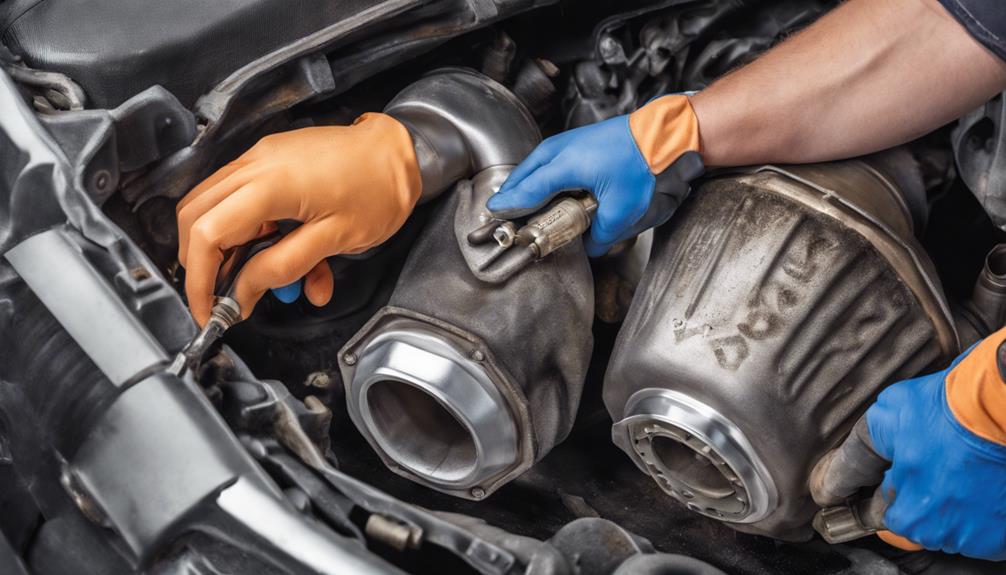
When replacing a hybrid catalytic converter, ensuring proper installation is essential to maintain the efficiency and performance of your vehicle. Hybrid catalytic converters are specifically designed to function with both gasoline and electric power sources in hybrid vehicles, requiring specialized knowledge for replacement. Due to the unique nature of hybrid systems, the replacement process may involve additional steps compared to traditional gasoline-powered vehicles. To guarantee important functioning, it's critical to consult the vehicle manufacturer's guidelines or seek professional assistance when replacing a hybrid catalytic converter.
Proper installation of the hybrid catalytic converter is paramount as it directly impacts the efficiency and performance of your hybrid vehicle. Any errors during installation can lead to decreased efficiency and potential issues in the vehicle's operation. Thus, taking the necessary steps to make sure accurate replacement is crucial. By following the manufacturer's recommendations and seeking expert help if needed, you can maintain the integrity of your hybrid system and enjoy best performance from your vehicle.
Best Practices for Hybrid Catalytic Converter Installation
To guarantee smooth and efficient replacement of your hybrid catalytic converter, focusing on precision and adherence to manufacturer guidelines is paramount. When installing your hybrid catalytic converter, follow these best practices:
- Utilize specialized tools such as an oxygen sensor socket for accurate sensor installation.
- Opt for high-quality gaskets to confirm proper sealing and prevent any leaks that could impact performance.
- Apply the correct torque to all bolts and connections to maintain the integrity of the hybrid catalytic converter in your vehicle's emission control system.
Maintenance Tips for Hybrid Car Catalytic Converters
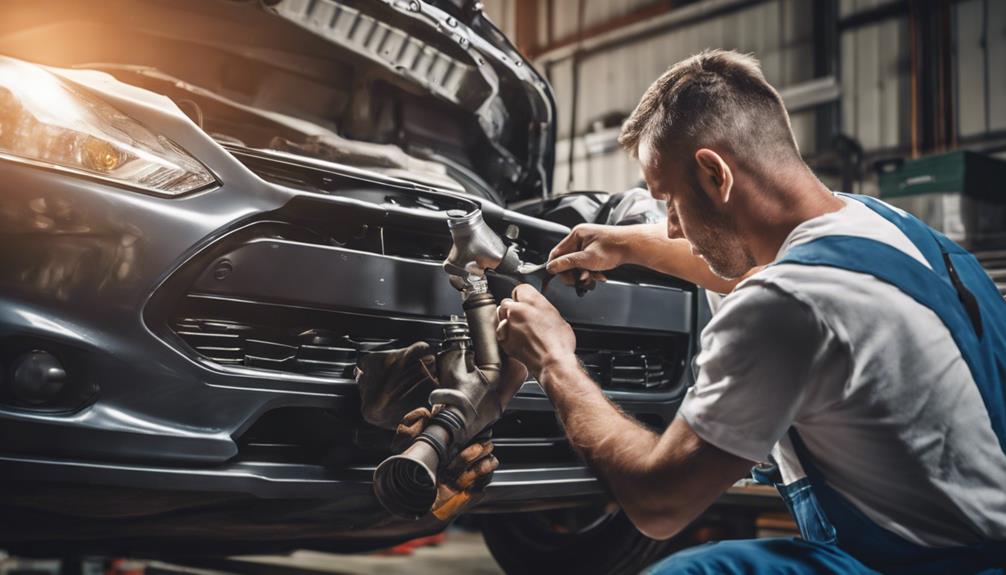
Regular inspection and timely maintenance of your hybrid car's catalytic converter are essential for ensuring peak performance and emission control. Check the catalytic converter regularly for any damage, such as physical dents or holes, as these can affect its efficiency.
Keep an eye on your hybrid car's engine performance and fuel efficiency, as these can be indicators of a failing catalytic converter. Following the manufacturer's recommended maintenance schedule is vital to prevent costly repairs and maintain the converter's functionality.
It's also advisable to consult a certified hybrid car technician for specialized care and maintenance of the catalytic converter in hybrid vehicles. By staying proactive and attentive to your hybrid car's catalytic converter, you can prolong its lifespan, optimize fuel efficiency, and reduce harmful emissions.
Frequently Asked Questions
What to Do Before Replacing Catalytic Converter?
Before replacing a catalytic converter, you should guarantee preventive maintenance by properly diagnosing issues with the exhaust system, emissions testing, oxygen sensors, engine performance, and exhaust leaks. This proactive approach also reduces environmental impact.
What to Do After Installing New Catalytic Converters?
After installing new catalytic converters, guarantee proper function by resetting the vehicle's computer, conducting a diagnostic scan, examining for leaks or noises, monitoring performance and emissions. Promptly address issues to avoid damage.
What Are the 3 Most Leading Failures of a Catalytic Converter?
To maintain hybrid car catalytic converter efficiency and longevity, regularly check oxygen sensors for proper functioning, make sure spark plugs are in good condition, and prevent unburned fuel from harming the system. Proper maintenance extends converter lifespan.
What Is the Difficulty of Replacing a Catalytic Converter?
Replacing a catalytic converter in a hybrid car can be challenging due to complex integration with emission systems and electrical components. Specialized knowledge is essential for proper installation, considering cost, compatibility, and emission testing. Consulting a professional guarantees warranty coverage and peak performance.
Conclusion
In summary, ensuring the proper installation of a hybrid car catalytic converter is essential for top performance. Remember to follow safety measures, carefully remove and install the converter, and conduct thorough testing to guarantee efficiency.
Neglecting these steps could lead to future issues and costly repairs. As the saying goes, 'A stitch in time saves nine,' so taking the time to replace the catalytic converter correctly now will prevent bigger problems down the road.

